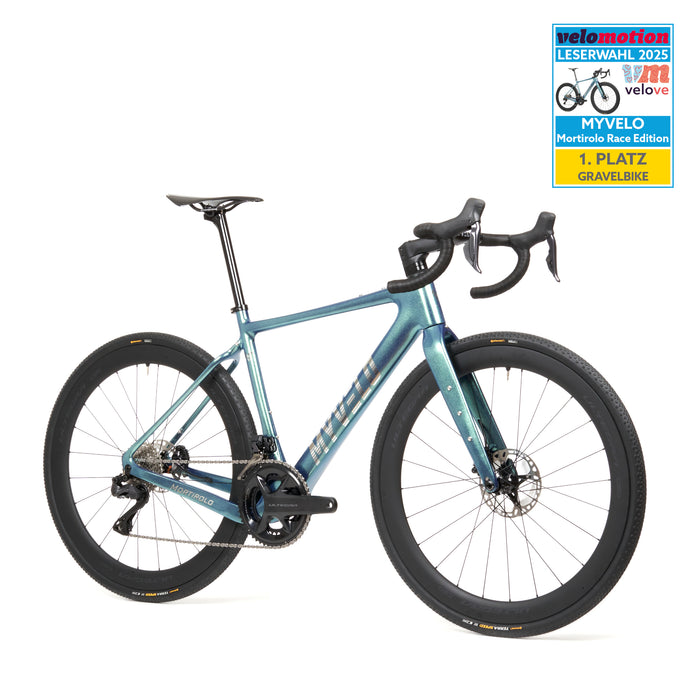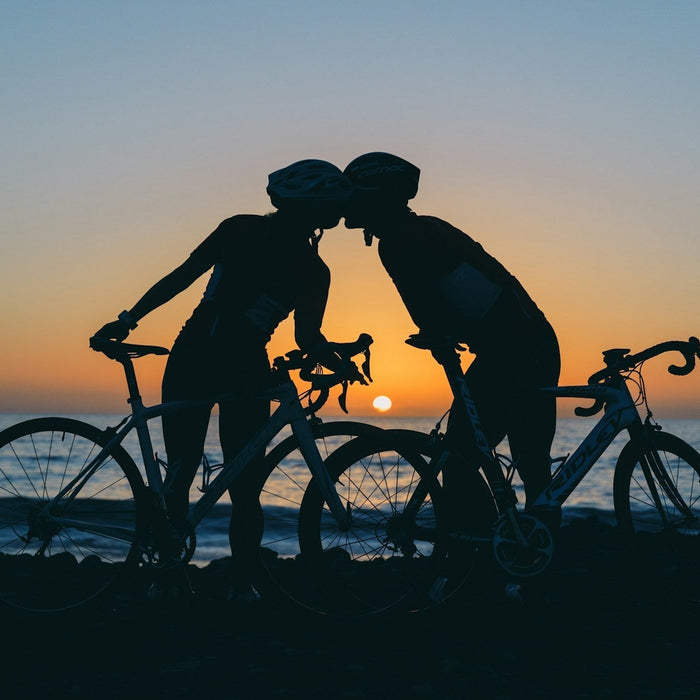
Mortirolo Gravel Bike - Race Edition
incl. FREE shipping & free returns

The Giro d'Italia is much more than a cycling race. It is a journey through Italy's stunning landscapes, a story of heroism and strategy, and a true spectacle for any cycling enthusiast. If you are a road bike fan, the Giro is the perfect opportunity to delve deeper into the world of professional cycling.
Von Vincent Augustin |
4 minutes read time

The Giro d'Italia was first held in 1909 and has since developed into one of the most prestigious Grand Tours, alongside the Tour de France and the Vuelta a España . From the beginning, the Giro has been a stage for epic battles - whether in the high mountains, on fast sprint stages or through the changeable Italian weather.
The Maglia Rosa – the legendary pink jersey – is the ultimate goal for every professional. It symbolizes the overall leader and has been worn by legends such as Fausto Coppi, Eddy Merckx and Marco Pantani.

In contrast to the Tour de France, the Giro is often more unpredictable. The route always surprises with tough mountain stages, narrow roads through historic towns and time trials that can turn the rankings upside down. And then there is the passion of the Italian fans - they live and breathe this race.
For you as a spectator or perhaps even a participant in an amateur event, the Giro is an opportunity to experience the limits of the sport. The route leads through impressive landscapes: from the Dolomites to Tuscany and the spectacular climbs such as the Passo dello Stelvio or the Mortirolo .

Every year a new route is chosen, classics such as the Zoncolan or new surprises could be on the agenda. There is often a key tactic: is the early attack in the mountains worth it, or will an explosive sprint decide the race?
The organizers attach great importance to creating varied stages that cover different regions of Italy. The challenges alternate: spectacular mountain stages in the Alps and Dolomites, fast flat stages for sprinters and technically demanding time trials.
The route is usually officially presented in the autumn of the previous year.
The mental aspects of the Giro d'Italia can inspire you. Professionals have to be strong not only physically but also mentally to keep going stage after stage. You can integrate this into your training by working on your stress tolerance: consciously ride longer distances or more intense intervals than you are used to. Learn to deal with fatigue and mental challenges, because that is exactly what makes the difference - not only in road bike training, but also in your next big goal. The mind always rides along! 🚴♂️💪
You can also take a lot from the Giro for your own road bike training :
A training plan for a Giro d'Italia-inspired tour on holiday should improve your endurance, climbing ability and recovery. Here is a 12-week plan for ambitious amateur athletes:
The Giro d'Italia is a celebration of cycling and a symbol of the beauty and toughness of the sport. It motivates, inspires and shows what man and machine are capable of. As you watch the next stage, imagine yourself riding these legendary roads yourself - and maybe you'll already be planning your next tour of Italy.
Because one thing is clear: The Giro is not just a race, it is a way of life. 💪🚴♂️

Als Rennradfahrer möchte man möglichst ständig besser werden: schneller, ausdauernder und effizienter. Doch was, wenn der Schlüssel zu diesen Zielen nicht nur auf zwei Rädern liegt? Rudern, oft unterschätzt, bietet eine ideale Ergänzung zum Radtraining. Es trainiert nicht nur den ganzen Körper, sondern verbessert auch die Ausdauer, Kraft und Stabilität – entscheidende Faktoren für jeden Radsportler.

Nach einer intensiven Rennrad-Einheit ist die richtige Regeneration entscheidend, um Leistung zu verbessern, Verletzungen zu vermeiden und langfristig Fortschritte zu erzielen. Doch wie sieht eine effektive Erholung aus? Hier bekommst Du die besten Tipps zur optimalen Regeneration nach dem Rennradtraining.

Erfahre, wie Radsport-Ligen aufgebaut sind und weitere Infos zur Organisation im Profi-Radsport!